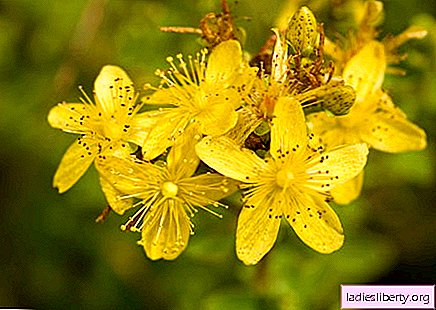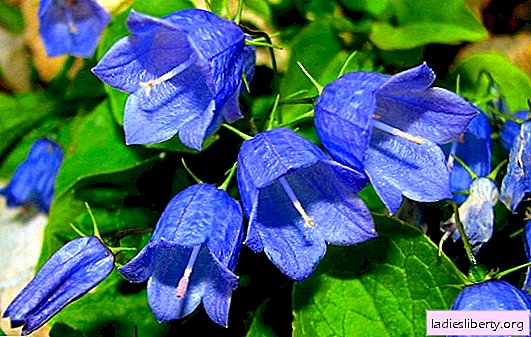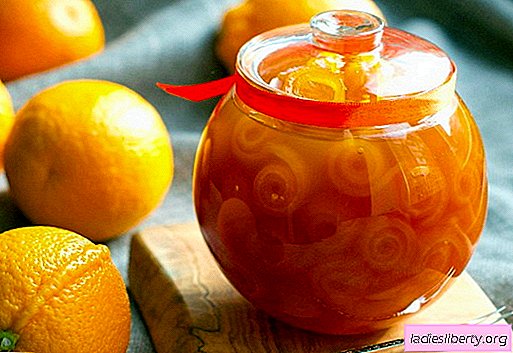
St. John's Wort - General Description
St. John's wort (Hypericum, St. John's wort or perforated) is a perennial or rarely annual herb of the family of St. John's wort (Malpigiaceae). The stem is mostly tetrahedral. The leaves are opposite, mealy, whole-edge, have short petioles and dotted black oily glands.
A single or multiple-headed flower, collected in semi-umbrellas in the form of corymbose cimic inflorescences. The cup has five sepals of various shapes, five petals of golden or yellow color. The fruit in the form of a leathery box, when ripe, cracks into several multi-seeded nests, sometimes resembling a berry. A large number of seeds of small cylindrical shape, can have an oval shape, wings, villi and cells.
St. John's wort - types and places of growth
There are about 110 species of St. John's wort, common in temperate climates in the Northern Hemisphere and southern tropical regions. Most varieties are found in the Mediterranean. In Russia, it can be found in almost any territory except the Far North.
St. John's wort - healing properties
St. John's wort is a popular folk remedy for the treatment of many diseases. Its variety - Hypericum perforatum - is used as an antiseptic for colitis and diarrhea. The astringent property of the herb is used to treat gums and prevent gingivitis and stomatitis. Drugs containing St. John's wort relieve spasms of blood vessels, strengthen capillaries and blood supply during venous circulation, increase diuresis.
The herb contains a bitter substance that has a beneficial effect on the secretion of the stomach and improves appetite. Traditional medicine has long used a hemostatic and anti-inflammatory drug in pharmacology for the manufacture of medicines for anemia, migraine, hypertension, cough, hemorrhoids, jaundice, in the treatment of mastitis, pulmonary, stomach diseases, bedsores, allergies, rashes, wounds and ulcers.
St. John's wort - dosage forms
Medicinal raw material is the grass of the plant and flowers. It should be harvested during the flowering period, cutting only the upper parts of no more than 30 cm, and then not completely, (you need to leave the thickets in about 30%). Dosage forms are decoctions and briquettes. Traditional medicines are Novoimanin (contains hyperforin that inhibits Staphylococcus aureus growth). In addition, the drug neflavite, which has P-vitamin activity and is able to reduce capillary permeability, is widely used.
St. John's wort - recipes
- Tincture of St. John's wort: 50 gr. St. John's wort herbs in dry form taken 0.5 l of vodka. Shake the contents, strain after 10 days.
- Popular St. John's wort teas can be used as part of mixtures with hop cones to normalize autonomic fluctuations and hormonal levels during menopause. Tea from St. John's wort and lemon balm can be given to children in order to better concentrate on learning.
- Decoction of Hypericum herb: 1 tablespoon of hypericum per 1 cup of boiling water. Drink half a glass before meals twice a day.
St. John's wort - contraindications
St. John's wort herb has a huge advantage over chemical pharmacological drugs, especially in the treatment of depression, as it has no pronounced contraindications and side effects. But St. John's wort increases blood pressure and is contraindicated in pregnant women. Prolonged use may cause hives. With a high concentration of grass in a man's body, temporary impotence may occur.
The name St. John's wort owes its name to the toxic effect on animals, while for humans it is slightly toxic. Especially sensitive to it are animals of white color - sheep, horses, less often cows.











